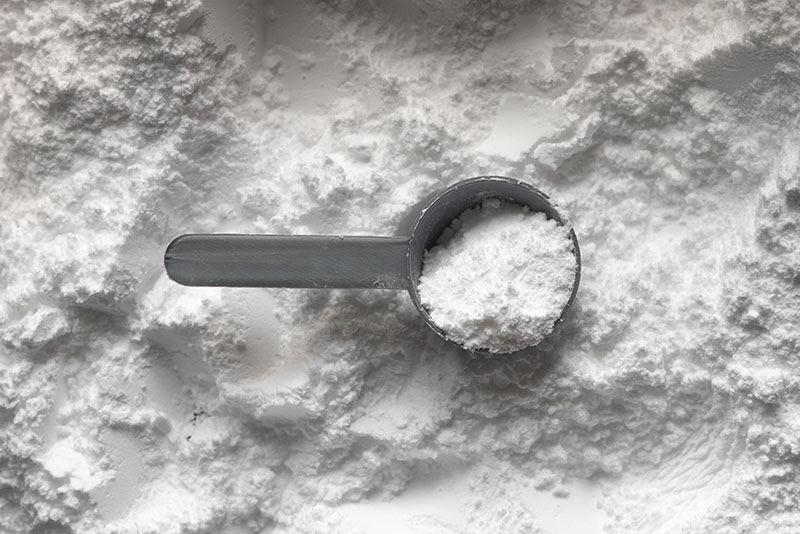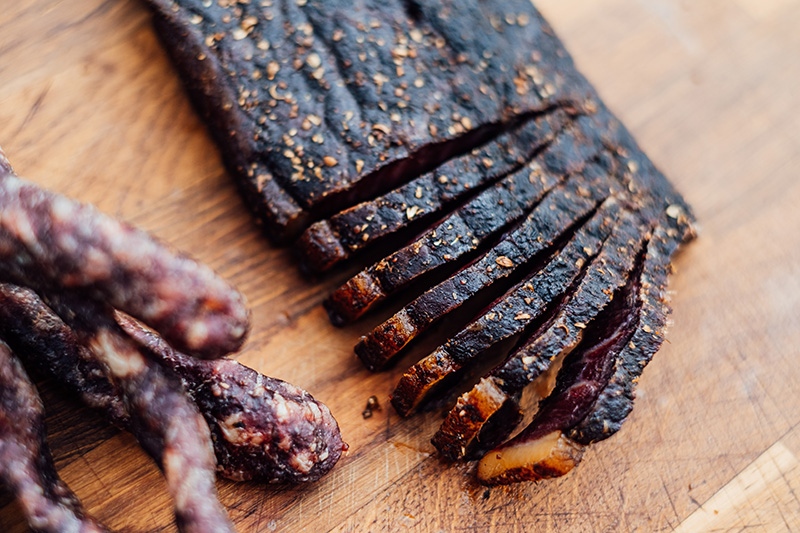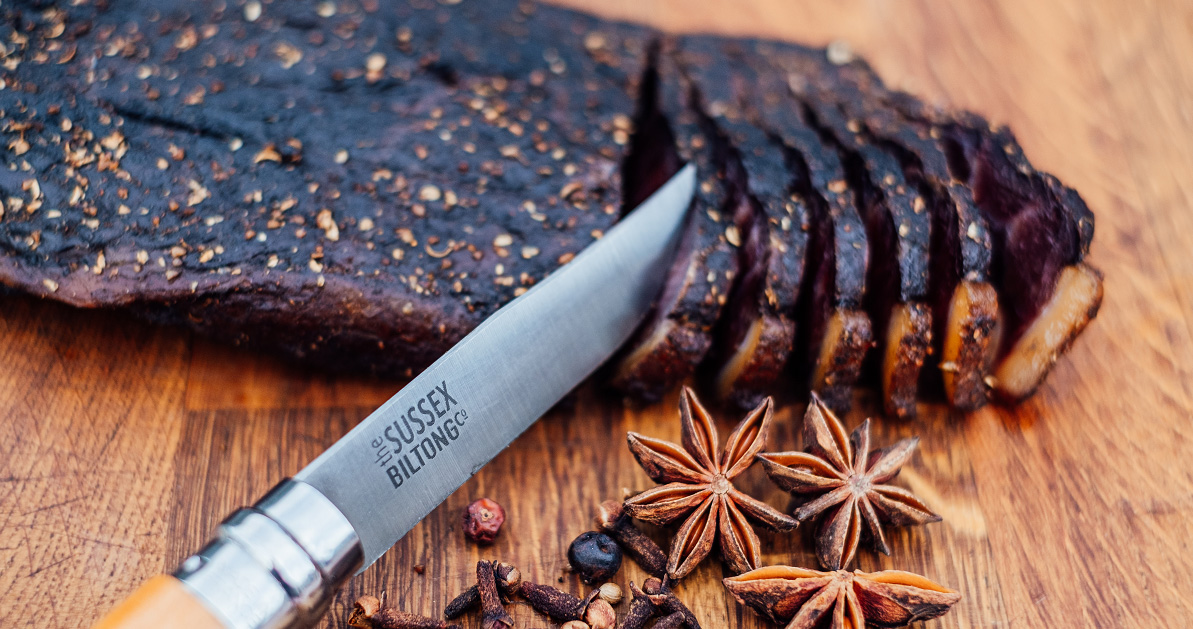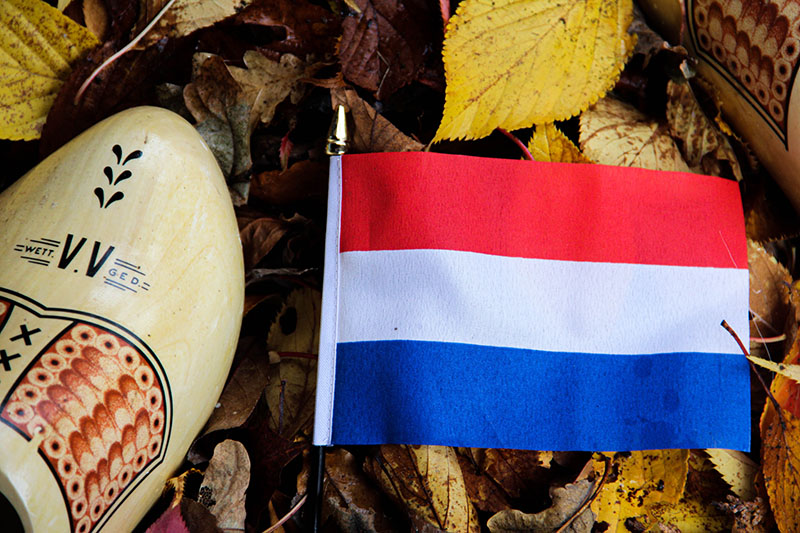The Perfect Food for Health and Fitness: Biltong

What is Biltong?
You might not be familiar with biltong, but this ancient South African snack is taking the health and fitness world by storm. Packed with protein, low in fat, and devoid of carbs, biltong is the perfect fuel for your workout. And that’s not all—biltong is also incredibly tasty. If you’re looking for a healthy, delicious snack that will help you reach your fitness goals, look no further than biltong.
Biltong is a type of dried meat that originates from South Africa. It’s made by curing meat with vinegar, spices, and salt, then air-drying it for several days. The result is a chewy, flavourful snack that’s packed with protein and low in fat. Unlike jerky, biltong is not cooked, so the moisture stays in the meat, making it more tender and easier to chew.
Packed With Protein
One of the main benefits of biltong is that it is an excellent source of protein. Protein is a macronutrient that plays a crucial role in the overall health and wellness of the body. It is essential for building and repairing muscle tissue, and it also helps to maintain a healthy immune system. In fact, many health experts recommend consuming high-quality protein sources as part of a balanced diet to support overall health and well-being.
Our biltong is made from silverside beef, and we supply both fatty and lean cuts of meat for you to choose from. Our biltong contains a high amount of protein, which makes it a great option for those looking to increase their protein intake. This is especially beneficial for athletes, bodybuilders, and other active individuals who have a higher protein requirement than sedentary individuals.
Furthermore, biltong is also low in fat and carbohydrates, which makes it a great option for those who are looking to maintain a healthy weight or are following a low-carb diet. Carbs are important for energy, but excessive consumption can lead to weight gain, so for people looking for weight management options, biltong can be a great fit.
In addition to its high protein and low fat and carb content, biltong is also naturally gluten-free and does not contain any artificial preservatives or added sugars. this means that it can be a great alternative for people with dietary restrictions or allergies.
Overall, Biltong is an excellent source of protein and provides a variety of essential nutrients that help promote overall health and wellness. Its high protein content is perfect for active individuals, its low-fat and carb content can aid weight management, and its gluten-free, preservative-free ingredients can make it an ideal option for people with dietary restrictions. Making it a great option for almost anyone looking for a nutritious and satisfying snack.

Convenience and Portability
Another advantage of biltong is that it is a convenient and portable snack. Unlike many other types of dried meat, it doesn’t require refrigeration, so you can easily take it with you when you’re on the go. This makes biltong an ideal snack for busy people who are always on the go. Whether you’re heading to work, the gym, or out for a hike, biltong is the perfect snack to keep you fueled and energized.
One of the main benefits of biltong’s portability is that it’s perfect for a pre or post workout snack. Many people who workout find themselves looking for a quick, high-protein snack to eat before or after their workout. Biltong is an excellent option as it provides the necessary protein to aid muscle recovery and growth, while also being easy to take with you to the gym or on a run.
Another situation where biltong’s portability comes in handy is during long hikes. Whether you’re planning a day hike or a multi-day backpacking trip, it’s important to have a reliable source of energy to keep you going. Biltong is an excellent option as it provides a sustained source of energy that won’t weigh you down. It’s lightweight, easy to pack, and will last for days without refrigeration, making it the perfect snack for any hiker.
Nutritional Info
The exact nutritional varies depending on the cut of meat you choose. According to healthline.com, the basic nutritional breakdown per 28g of Biltong is as follows:
- Calories: 80
- Carbs: 1 gram
- Protein: 16 grams
- Fat: 2 grams
- Iron: 35% of the daily value (DV)
- Sodium: 19% of the DV
Biltong tastes amazing too!
Biltong has a rich flavour that comes from the vinegar, spices, and salt used in the curing process. The longer the meat hangs to dry, the more intense the flavour becomes. If you like spicy food, feel free to try our Hot & Spicy or Piri Piri biltong to really give your workout a kick. When it comes to buying biltong, make sure to purchase high quality product. All of our biltong is made from high-quality meat and natural spices. Avoid biltong that contains artificial preservatives or added sugar, such as the packets found in super markets. Once you try our authentic South African biltong, you’ll never go back to the store-bought stuff again.
Conclusion
If you’re looking for a healthy snack that will help you reach your fitness goals, look no further than biltong. This delicious South African snack is packed with protein and low in fat and carbs, making it the perfect fuel for your workout.
The Perfect Fuel for your Workout
Power up your workouts with this high protein, low carb super food. Available in a wide range of mouth-watering flavours for you to choose from.




